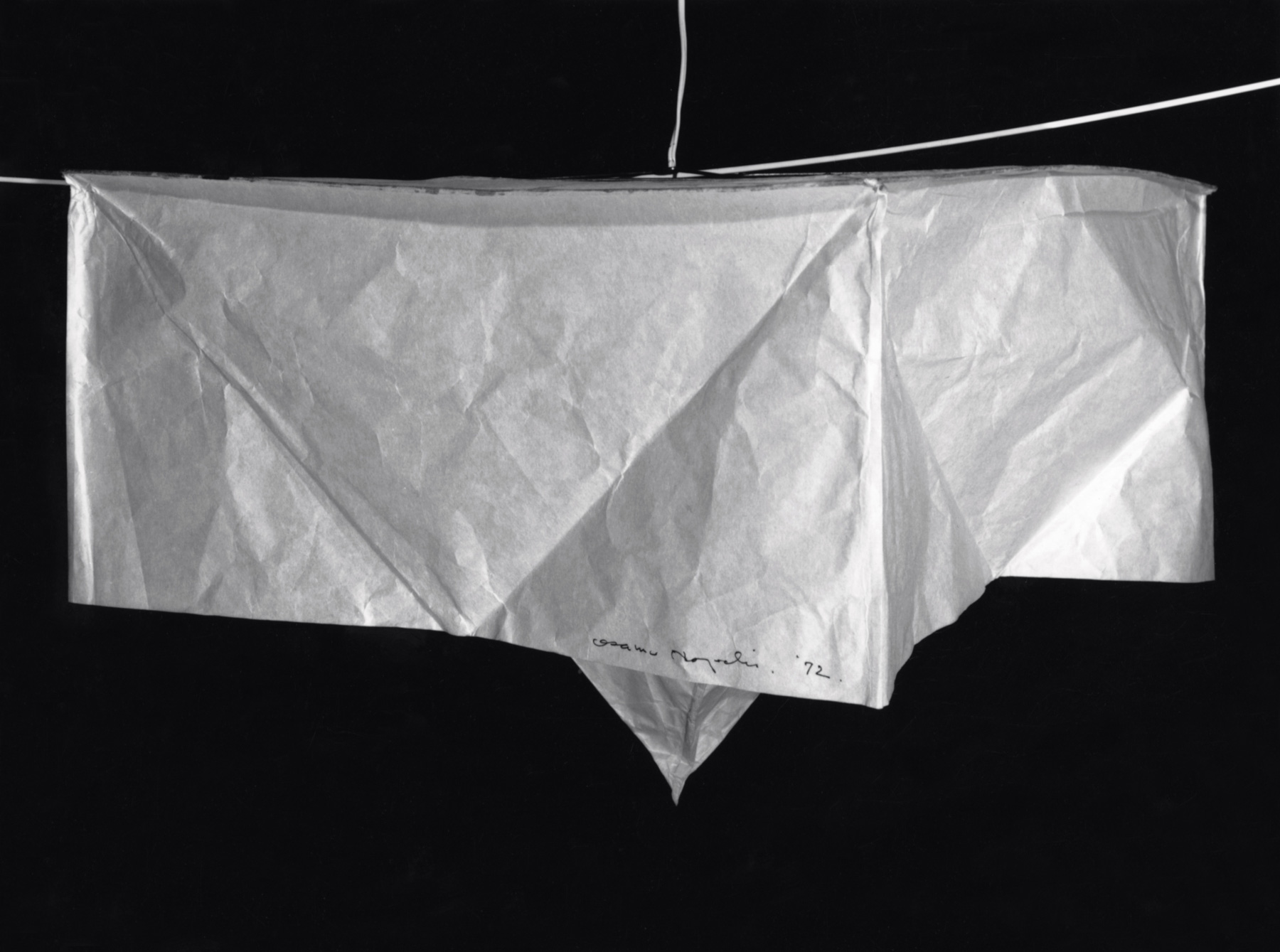History of Akari Light Sculptures

Metadata
Highlights
- Akari has its rationale in being in relation to people … I was told early on that all a young couple needed in starting life together was a ‘futon’ and an Akari above—a pad and a light, that is, not only just light, but the Akari light which is a difference because it has a shape, a sense of being which is more than merely lighting a room, it is lighting itself, that is, the paper of which the Akari is made becomes luminous as a result of the light inside, on its surface, however distant the light may be from the light bulb, it all becomes a luminous surface.1 (View Highlight)
- For each he concealed colored light elements within hollows and channels, and used reflected light from exterior sources for raking light on their surfaces. He gave the catchall designation “Lunars” to these experiments and applied them to studio sculpture as well, of which a handful of objects survive. However, dissatisfied with the effects of reflected light (View Highlight)
- With the chochin format, Noguchi could experiment with something he saw as egalitarian, “to bring sculpture into a more direct involvement with the common experience of living.”2 He would later refer to Akari as “elegant people’s art (View Highlight)
- A substantive entry in Isamu Noguchi’s effort to cast his expanded definition of sculpture in the context of everyday life, Akari are arguably the purest distillation of Noguchi’s intent. Akari were an experiment for Noguchi, both as a means to confuse perceptions in the debate on functional and non-functional and fine and applied arts, and to lend added conceptual heft and a truer social complement to his later sculptural work. (View Highlight)
History of Akari Light Sculptures

Metadata
Highlights
- Akari has its rationale in being in relation to people … I was told early on that all a young couple needed in starting life together was a ‘futon’ and an Akari above—a pad and a light, that is, not only just light, but the Akari light which is a difference because it has a shape, a sense of being which is more than merely lighting a room, it is lighting itself, that is, the paper of which the Akari is made becomes luminous as a result of the light inside, on its surface, however distant the light may be from the light bulb, it all becomes a luminous surface.1 (View Highlight)
- For each he concealed colored light elements within hollows and channels, and used reflected light from exterior sources for raking light on their surfaces. He gave the catchall designation “Lunars” to these experiments and applied them to studio sculpture as well, of which a handful of objects survive. However, dissatisfied with the effects of reflected light (View Highlight)
- With the chochin format, Noguchi could experiment with something he saw as egalitarian, “to bring sculpture into a more direct involvement with the common experience of living.”2 He would later refer to Akari as “elegant people’s art (View Highlight)
- A substantive entry in Isamu Noguchi’s effort to cast his expanded definition of sculpture in the context of everyday life, Akari are arguably the purest distillation of Noguchi’s intent. Akari were an experiment for Noguchi, both as a means to confuse perceptions in the debate on functional and non-functional and fine and applied arts, and to lend added conceptual heft and a truer social complement to his later sculptural work. (View Highlight)

